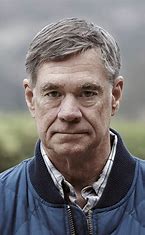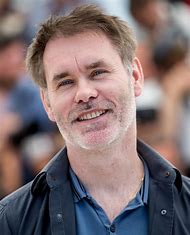About Gus Van Sant
Gus Van Sant is a celebrated American film director, producer, and screenwriter who has left an indelible mark on the world of cinema. Born on July 24, 1952, in Louisville, Kentucky, Van Sant grew up in a family of modest means and went on to study painting at the Rhode Island School of Design. However, he soon found his true calling in filmmaking and began his career directing short films and commercials.
Van Sant’s early work was marked by a raw, unvarnished style that explored the darker corners of human experience. He gained critical acclaim for his films Mala Noche (1985) and Drugstore Cowboy (1989), which tackled issues of addiction, poverty, and marginalization. Over the years, Van Sant has become known for his unique visual style, his willingness to take risks, and his ability to elicit powerful performances from his actors.
Early Life and Career

Birth and Childhood
Gus Van Sant was born on July 24, 1952, in Louisville, Kentucky, to Betty and Gus Green Van Sant Sr. His father was a clothing manufacturer, and his mother was a homemaker. Van Sant grew up in a family of modest means and spent much of his childhood moving around the country as his father’s business took them from place to place.
Despite the constant upheaval, Van Sant found solace in art and began drawing and painting at a young age. He went on to study painting at the Rhode Island School of Design, but soon discovered his true passion lay in filmmaking.
Early Career
Van Sant got his start in the film industry directing short films and commercials. His early work was marked by a raw, unvarnished style that explored the darker corners of human experience. He gained critical acclaim for his films Mala Noche (1985) and Drugstore Cowboy (1989), which tackled issues of addiction, poverty, and marginalization.
Van Sant’s breakthrough came with the release of Good Will Hunting (1997), which he directed and co-wrote with actors Matt Damon and Ben Affleck. The film was a critical and commercial success, earning nine Academy Award nominations and winning two, including Best Original Screenplay for Damon and Affleck.
Career Highlights
Last Days
Last Days (2005) is a film directed by Gus Van Sant that explores the final days of a troubled rock musician, loosely based on Kurt Cobain. The film is a haunting meditation on fame, addiction, and the pressures of creative genius. Van Sant’s signature visual style is on full display in the film, which features long, static shots and a dreamlike atmosphere.
Milk
Milk (2008) is a biographical film directed by Gus Van Sant that tells the story of Harvey Milk, the first openly gay person to be elected to public office in California. The film stars Sean Penn as Milk and explores his life and career as an activist and politician. The film was a critical and commercial success, earning eight Academy Award nominations and winning two, including Best Actor for Penn.
My Own Private Idaho
My Own Private Idaho (1991) is a film directed by Gus Van Sant that tells the story of two young male prostitutes, played by River Phoenix and Keanu Reeves, who embark on a journey of self-discovery. The film is a lyrical exploration of love, friendship, and the search for identity. Van Sant’s unique visual style is on full display in the film, which features stunning cinematography and a dreamlike atmosphere.
Conclusion
Gus Van Sant is a true icon of American cinema, known for his unique visual style, his willingness to take risks, and his ability to elicit powerful performances from his actors. Over the years, he has tackled a wide range of subjects, from addiction and poverty to fame and politics. Whether exploring the darker corners of human experience or celebrating the beauty of life, Van Sant’s films are always thought-provoking and deeply moving.
From his early days as a struggling artist to his current status as one of the most celebrated directors of our time, Gus Van Sant’s journey has been one of creativity, passion, and dedication. His films will continue to inspire and captivate audiences for generations to come.



